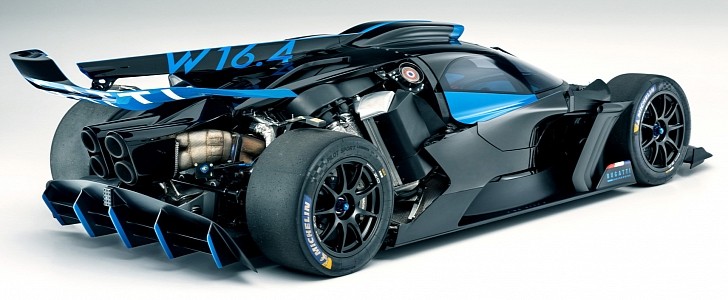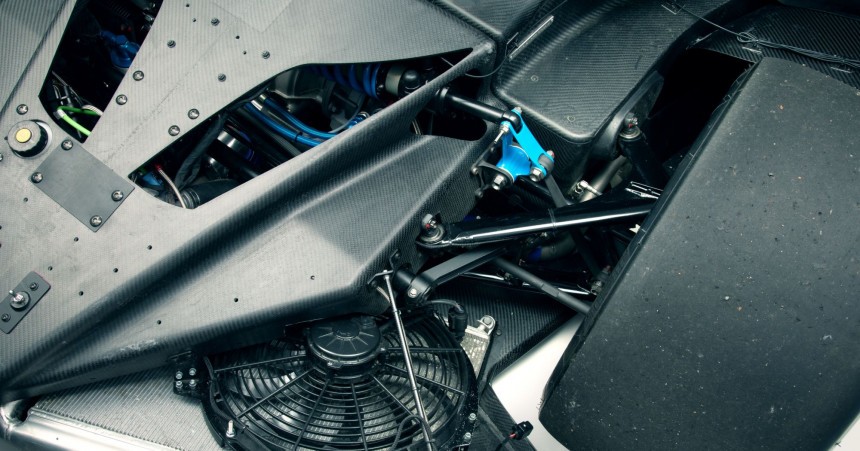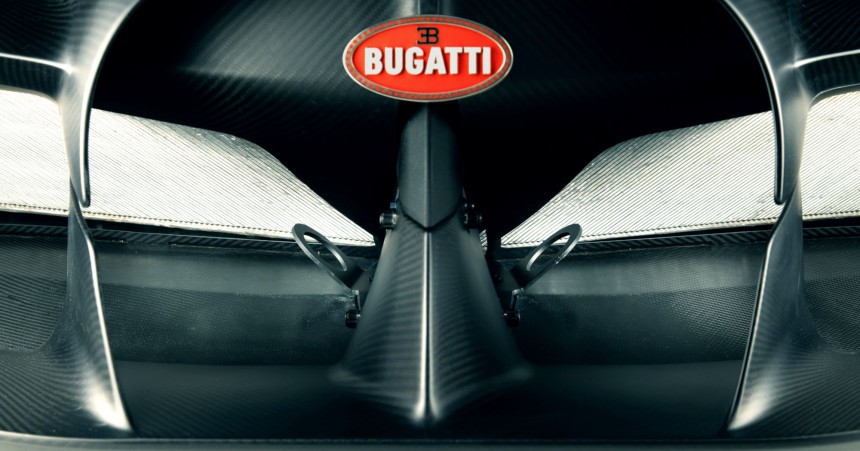After taking the notion of a track-oriented supercar to another level, Bugatti aims to do the same with lightweight titanium components using an innovative 3D printing process.
Revealed a few months ago, the Bugatti Bolide blew our minds by incorporating the legendary 8.0-liter W16 engine tuned to produce up to 1,850 hp into a track-oriented hypercar weighing just 1,240 kg (2,734 lbs).
To achieve these figures, the carmaker employed many technological innovations like the world’s first active roof scoop, which uses retractable dimples on its surface to optimize airflow.
Another recently revealed engineering breakthrough is a revolutionary 3D printing process that allows engineers to develop metal components that are much lighter than those manufactured using conventional casting methods.
Responsible for the implementation of this revolutionary process is Henrik Hoppe, a doctoral student in the New Technologies Department. Since 2017, he has been developing innovative metal materials and manufacturing processes, writing his master’s thesis on a calculation methodology for a 3D-printed titanium brake caliper that is 43% lighter than the production component used by the Chiron.
“Through the process known as selective laser melting, commonly known as 3D printing, new, hollow, ultracomplex components that are stiffened from the inside can be produced which are very lightweight and yet extremely rigid and strong. We are utilising these benefits for an increasing number of components in our hyper sports cars,” explains Hoppe.
By applying principles from the field of bionics, components are given a bone-like structure that features thin walls, a hollow interior, and subtle branching, which leads to remarkable rigidity despite their low weight.
Using this innovative method, engineers developed pushrods with an internal supporting arch that gives them enough strength to withstand forces of up to 3.5 tons (7,716 lbs) despite only weighing 100 grams (0.22 lbs).
Like a human bone, these rods have an internal structure that becomes thicker towards the center and then thinner again, meaning that they are optimally adapted to endure concentrated pressures.
Other highly complex elements manufactured using this patented 3D printing technology are also used in hidden places. Those include a mounting bracket used for the front wing, which can be fitted at three different heights. Also printed in titanium, this 600-gram (1.3-lb) component has an interior wall thickness of 0.7 mm (0.03 in) and is able to withstand an aerodynamic downforce of up to 800 kg (1,764 lbs).
The Bolide’s towering rear wing, which can produce up to 1.8 tons (3,968 lbs) of downforce at 320 kph (199 mph), is connected to the central carbon fiber fin using another 3D-printed titanium component. It weighs just 325 g (0.7 lbs) yet provides enough strength to bear the massive forces applied to the wing.
Engineers also used several other 3D-printed components to lower the overall weight of the groundbreaking hypercar. Those include a bracket that supports the steering column and two interior air vents. All of them are designed as lightweight hollow structures, with a uniform wall thickness of 0.5 mm (0.02 in).
To get a better idea of the insane attention to detail involving this project, Bugatti even reduced the weight of the tailpipe trim cover by 3D printing it using titanium and special ceramic inserts. Measuring a little over 280 mm (11 in) in length, it also features a consistent wall thickness of just 0.5 mm (0.02 in) and therefore weighs less than 750 g (1.6 lbs).
These complex components highlight the immense potential of 3D printing, a method that has begun to revolutionize the automotive industry's manufacturing processes. Other carmakers have also started experimenting with similar techniques, yet Bugatti’s titanium-based approach is by far the most groundbreaking.
To achieve these figures, the carmaker employed many technological innovations like the world’s first active roof scoop, which uses retractable dimples on its surface to optimize airflow.
Another recently revealed engineering breakthrough is a revolutionary 3D printing process that allows engineers to develop metal components that are much lighter than those manufactured using conventional casting methods.
“Through the process known as selective laser melting, commonly known as 3D printing, new, hollow, ultracomplex components that are stiffened from the inside can be produced which are very lightweight and yet extremely rigid and strong. We are utilising these benefits for an increasing number of components in our hyper sports cars,” explains Hoppe.
By applying principles from the field of bionics, components are given a bone-like structure that features thin walls, a hollow interior, and subtle branching, which leads to remarkable rigidity despite their low weight.
Like a human bone, these rods have an internal structure that becomes thicker towards the center and then thinner again, meaning that they are optimally adapted to endure concentrated pressures.
Other highly complex elements manufactured using this patented 3D printing technology are also used in hidden places. Those include a mounting bracket used for the front wing, which can be fitted at three different heights. Also printed in titanium, this 600-gram (1.3-lb) component has an interior wall thickness of 0.7 mm (0.03 in) and is able to withstand an aerodynamic downforce of up to 800 kg (1,764 lbs).
Engineers also used several other 3D-printed components to lower the overall weight of the groundbreaking hypercar. Those include a bracket that supports the steering column and two interior air vents. All of them are designed as lightweight hollow structures, with a uniform wall thickness of 0.5 mm (0.02 in).
To get a better idea of the insane attention to detail involving this project, Bugatti even reduced the weight of the tailpipe trim cover by 3D printing it using titanium and special ceramic inserts. Measuring a little over 280 mm (11 in) in length, it also features a consistent wall thickness of just 0.5 mm (0.02 in) and therefore weighs less than 750 g (1.6 lbs).
These complex components highlight the immense potential of 3D printing, a method that has begun to revolutionize the automotive industry's manufacturing processes. Other carmakers have also started experimenting with similar techniques, yet Bugatti’s titanium-based approach is by far the most groundbreaking.











